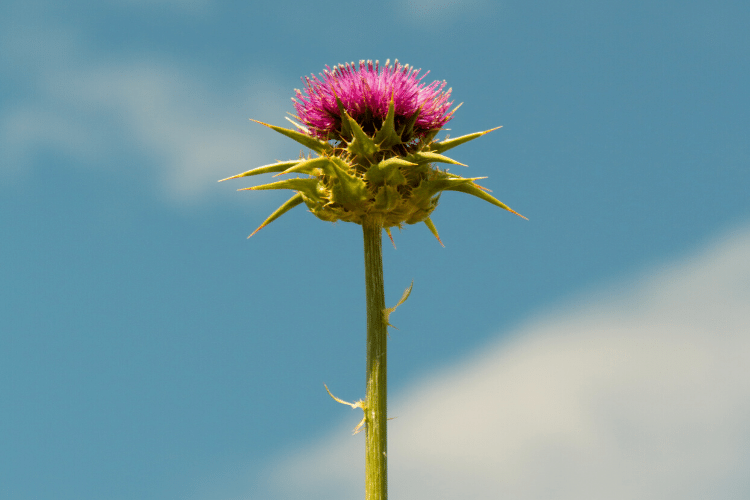Heads up! I’m NOT a doctor or nutritionist. I’m not giving you any medical advice or dietary recommendations here. Check with your doctor before you make any changes to your lifestyle, diet, or supplement regimen.
In this day of “there’s a pill for that!” — from sweating too much – to peeing in the middle of the night – to adult acne – to anxiety — we have a medication for practically everything.
It’s a convenience we pretty much can’t live without.
But when it comes to too much iron, unfortunately we don’t have a magical eraser for our problems. Many of us have to put in our dues by donating blood or getting phlebotomies – no pill can do the trick.
Yes, there are iron chelating medicines, but many doctors try to avoid these unless they’re necessary because they can come with a host of side effects. Here’s the list of side effects for iron chelation therapy, according to the Iron Disorders Institute:
- blurred vision
- rash or hives
- itching
- vomiting
- diarrhea
- stomach or leg cramps
- fever
- rapid heart beat
- low blood pressure
- dizziness,
- anaphylactic shock
- kidney or liver damage
- loss of hearing or cataracts
I don’t know about you – but seeing this list made me realize that being on medication or needing to make frequent visits to the doctor for iron chelating treatments is not ideal.
If your doctor thinks you need iron chelation therapy, then YES – of course – do it! Some people with hemochromatosis can’t donate blood or get phlebotomies because of problems like low hemoglobin or other complications, so iron chelating drugs are the best way to go.
As you go through phlebotomies or iron chelation therapy, there are ways to support your treatment by keeping your iron levels down. For example, DON’T start your mornings with a bowl of enriched cereal, or finish your days with a hamburger for dinner.

Your food choices impact your iron levels, and one type of food in particular can make a difference. Herbs.
HERBS, REALLY?
I used to think of herbs as a little added flare to a meal. Like a garnish (parsley on top of spaghetti), or to add some zest to a recipe (like lemongrass in Thai coconut soup).
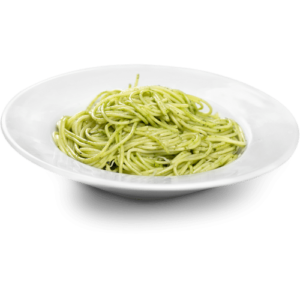
The thought of herbs as actual medicine seemed like an old fashioned relic from my grandma’s farm days.
Sure, I knew some of the basics – drinking peppermint tea was supposed to help an upset stomach, chamomile was good for sleeping, yada yada.
But I had this underlying belief that there was no way herbs could be as useful as pharmaceuticals.
And, generally speaking, that’s true. Modern drugs are made up of usually just one chemical compound that’s been pinpointed for its very precise ability to do one thing, like help us sleep, or get rid of migraines, or reduce acne, or chelate iron from your blood, or you name it. Then that compound gets concentrated so it’s hundreds of times stronger and turned into a nifty little pill. That’s why pharmaceuticals are incredibly effective.
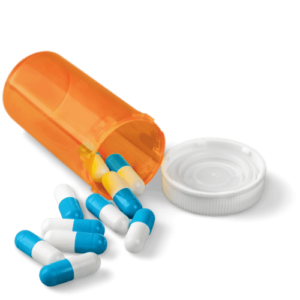
The downside is that pharmaceuticals can have some serious negative side effects, like the side effects of iron chelating drugs.
Herbs are different – they come in their natural plant form, so the active chemical compounds that help us heal aren’t nearly as concentrated, and instead of taking just one specific compound, you’re eating a plant, which has many chemical compounds that all work together.
Because there are so many components that work together in herbs, this makes herbal chemical compounds harder to study, and harder to understand why they do what they do.

Despite this setback, it seems that plants and herbs are catching on.
Studies are starting to show just how powerful “the natural world” can be, sometimes just as beneficial as drugs.
Like how cayenne pepper reduces appetite and increases fat burning.
Or how turmeric improves brain function and fights Alzheimer’s.
Or St. John’s Wort, which studies show helps mild depression.
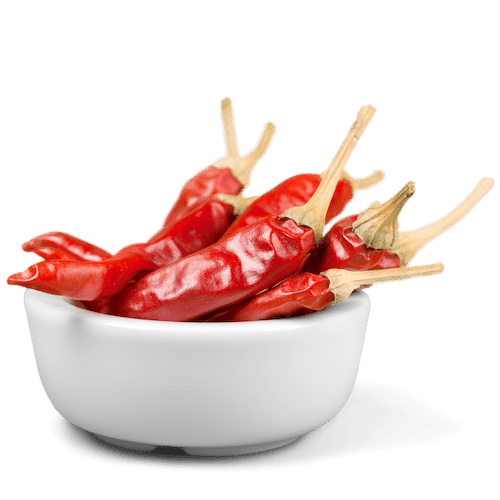
Lucky for us, herbs do more than just garnish our spaghetti or spice up our Tuesday night tacos.
And, depending on your insurance, herbs can be a heck of lot cheaper than pricey pharmaceuticals and multiple visits to the doctor.
Which leads me to…
HERBS FOR HEMOCHROMATOSIS
Depending on your symptoms, as well as how much iron you’ve got stored up, you’ll probably have to see your doctor for phlebotomies or iron chelation treatment for the rest of your life.
While these things are necessary, it’s nice to have other tools to prevent iron absorption so you can hopefully see your doctor a little bit less.
Depending on your symptoms, there are actually a lot of herbs that can help with hemochromatosis and the aches & pains, brain fog, low libido, impotence, dizziness, heart flutters, tiredness, and other symptoms that can come along with it.
But in terms of lowering iron, one herb you’ll want to have stocked in your pantry is milk thistle.
How come? Research shows that milk thistle can be beneficial for anyone with hereditary hemochromatosis. It’s been well-documented as an iron-blocker (it blocks iron from getting absorbed into your bloodstream) and an iron-chelator (it helps “chelate” or remove iron from your cells and organs).
On top of its ability to lower iron levels, it’s also an antioxidant, an anti-inflammatory, and it helps protect liver health. That’s why Dr. Eric Lewis (author of Holistic Help for Hemochromatosis) recommends that hemochromatosis patients take milk thistle.
Now I’m guessing that you might not have heard of milk thistle (I sure hadn’t heard of it before I got hemochromatosis). Milk thistle’s not exactly the most common herb at the grocery store, and it’s not an ingredient that you’d see in a typical recipe book. So…what is milk thistle, exactly?
MILK THISTLE
Milk thistle tends to get a bad rap, considered more obnoxious than medicinal.
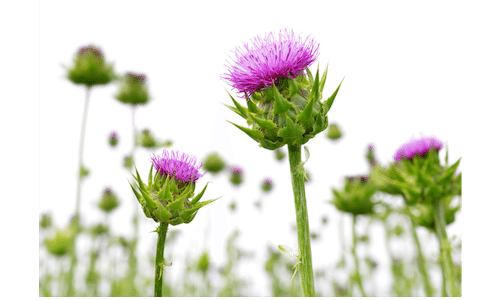
Commonly discarded as an annoying weed, milk thistle might be growing in your area and you don’t even know it! In some places it’s actually categorized as an invasive weed, as it can spread quickly.
A thorny plant with spiny purple flowers and white-streaked leaves, it releases a milky fluid when crushed. (Get it? “Milk” thistle.)
Despite people’s irritation with this “bothersome” weed, it’s actually been used in natural remedies for more than 2,000 years. Some people even think milk thistle is one of the “thistles” mentioned in the Bible, and that the “milk” is named after the Virgin Mary’s milk.
Definitely bizarre, but kinda cool too, right?
In 1597, milk thistle was called “the best remedy against melancholy diseases.”
Skip forward to today, its uses range from curing hangovers to saving the life of anyone who eats poisonous mushrooms.
Dr. Axe recommends milk thistle to detox your liver, and as a way to prevent gallstones.
Milk thistle might also help relieve allergies and asthma – as initial studies show it can help reduce allergic inflammation.
So you have hereditary hemochromatosis – what can milk thistle do for you?
TOP 7 BENEFITS OF MILK THISTLE FOR HEREDITARY HEMOCHROMATOSIS
- Blocks iron absorption
- Lowers iron storage
- Anti-inflammatory
- Protects your liver
- May reduce insulin resistance
- May fight cancer
- Prevents aging

1. BLOCKS IRON ABSORPTION
Research shows that milk thistle reduces iron absorption from food.
In one study of hemochromatosis patients, after eating a meal containing 13.1 mg (non-heme) iron and waiting 4 hours:
- people who ate the meal without milk thistle absorbed around 10mg iron
- people who ate the same meal with milk thistle absorbed around 8mg iron
It was possible for people to absorb 2mg less iron from their food simply by eating milk thistle with their meal!
HOW DOES MILK THISTLE BLOCK IRON?
Similar to coffee and tea, milk thistle contains special compounds called polyphenols that bind to the iron in your food.
The polyphenols in milk thistle have a “high affinity” for iron – so they tend to bind to iron even when they could bind to something else! Once the polyphenols and iron bind, they really stick together.
As you digest your meal, normally you’d absorb the iron from your food.
BUT if you eat milk thistle with your meal, the iron gets bound up with the polyphenols, and your body can’t absorb those iron-polyphenol compounds.
Instead the iron-polyphenol compounds pass right through your body (you poop ’em out).
So anytime you’re planning on eating a meal with a significant amount of iron* (like potatoes, beans, peas, cooked dark leafy greens, seeds, or nuts) try pairing your meal with a cup of milk thistle tea or take a milk thistle supplement.
*Reminder…
Lowering iron absorption with milk thistle and polyphenols works best with NON-HEME iron (the type of iron found in plants)
HEME iron (the type of iron found in meat) cannot be decreased as much using milk thistle and your body will absorb more of it regardless of what you do.
2. LOWERS IRON STORAGE

Milk thistle not only BLOCKS iron from getting absorbed into your bloodstream when you eat food, it also has the potential to REMOVE iron that’s already stored in your cells and organs.
In a study of patients with hepatitis C (in case you’re wondering – hepatitis C often causes iron overload, so it’s a similar disease to hemochromatosis in that way) iron storage levels decreased when the patients took milk thistle.
Here’s how that works: Your body uses the protein ferritin to store iron. Ferritin binds to iron and together the ferritin and the iron “deposit themselves” into the cells of your organs.
When you have hemochromatosis, you continuously store away iron (even when you already have plenty – your body doesn’t know to stop). As your iron storage increases, so do your ferritin levels. That’s why doing a ferritin test can lead to a hemochromatosis diagnosis.
Fortunately, the most active compound in milk thistle (called silybin) has been proven to chelate iron – meaning it pulls iron away from ferritin and “out of storage.”
Once silybin removes the iron from storage, the iron gets cleared out of your body (yeah, just like above, you poop it out) and your ferritin levels go down.
If you have hemochromatosis and you already have high ferritin/iron storage levels, this is a great thing to know! Not very many substances are able to chelate iron. It’s a lot easier to prevent iron from being absorbed than to actually remove iron that’s already in you.
That’s actually why you have to get phlebotomies (or donate blood) – losing blood is the best way to pull iron away from ferritin and out of storage.
Every time you lose blood, you have to create new fresh blood. To do that, chemical signals get sent to the ferritin in your cells telling the ferritin it must release iron from storage because you need that iron to create new red blood cells.
Now, with milk thistle, you’ve got another trick up your sleeve (other than bloodletting) to lower your ferritin/iron storage levels!
3. ANTI-INFLAMMATORY

Now’s a good time to go check your ferritin levels discussed in #2 above.
Do you have a lot of ferritin? If yes, that means you’ve got a lot of iron in storage.
One side effect of high iron storage is INFLAMMATION.
Inflammation is your body’s response when there’s something wrong, often showing up as swelling, redness, heat, or pain – like when you sprain your ankle and it gets puffy, or you get sick and your throat turns red and painful.
Sometimes inflammation might not be as obvious as a swollen ankle or a sore throat. For example, excess iron causes low-grade inflammation that can last a long time (sometimes decades) before you notice anything seriously “wrong.”
The effects of this low-grade inflammation from iron creep in very slowly over time. You might eventually start to feel sore muscles, joint pain, stomachaches, or just feel tired.
Eventually, the inflammation from iron overload can lead to more serious problems like diabetes, liver cirrhosis, obesity, and cancer.
Fortunately, milk thistle’s full of strong antioxidants that fight against inflammation by protecting your tissues and organs from damage. This can help prevent some of the diseases that are associated with iron overload!
Milk thistle not only protects your cells, but initial studies show that milk thistle may also lower the body’s inflammatory response. Meaning you’ll experience less pain, achiness, and fatigue.
This is a win for your joints, muscles, organs, and your whole body.
4. PROTECTS YOUR LIVER

Your liver is the organ that has to process and filter out the gunk in your body from all the things..
- you eat (like junk food, as well as additives and pesticides in your food)
- you drink (like alcohol and soda)
- you breathe in (like smoke and pollution in the air)
- your skin absorbs (like chemicals in your cleaning supplies and makeup)
ALL of these toxins get cleaned out of your body…and it’s all thanks to your liver.
Your liver is the MOST important organ to pay attention to when you have hemochromatosis.
Why?
For anyone with HH, the first organ “to go” is usually your liver because that’s where the most excess iron gets stored away. That surplus of iron reacts with the cells in your liver – harming your cells and making them go haywire, eventually damaging the liver tissues that are holding the iron. Then, your liver stops doing a good job of filtering out gunk, and you start to feel really sick because your body can’t get rid of the toxins that are coming in.
In fact, the reason I learned about milk thistle was because my liver enzymes were a little bit “off” as a result of my hemochromatosis, and my liver wasn’t functioning at its best capacity.
Good news! Milk thistle extract actually helps the liver repair itself after being damaged by toxins.
Milk thistle can even help treat liver disease.
While milk thistle does have these amazing regenerative qualities, it actually works best as a PREVENTATIVE tool. Milk thistle contains potent antioxidants that give your liver a big boost by PROTECTING it from damage.
Taking milk thistle today to protect your liver in the future will give you the most bang for your buck.
5. MAY REDUCE INSULIN RESISTANCE
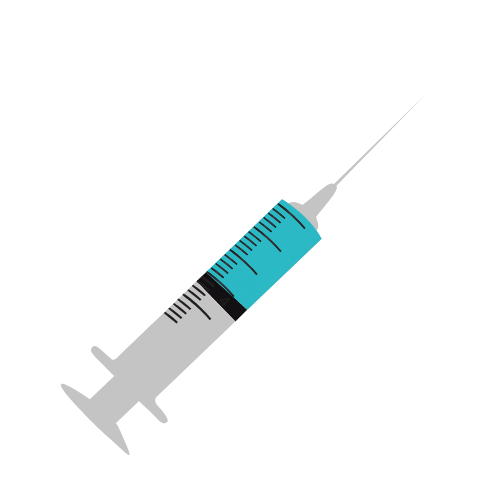
Imagine eating an apple. Yum.
Your stomach acid breaks down the apple so your intestines can absorb the nutrients and send them into your bloodstream.
One of the most important things you need to absorb is the sugar in the apple – that sugar is what powers every single cell in your body. Without any sugar, your cells would starve and your body would shut down.
That’s where insulin comes in – it has a very important role to play!
Insulin moves sugar from your blood to the insides of your cells so your cells can use the sugar for energy.
Insulin resistance happens when your cells don’t respond to insulin properly. When you’re resistant to insulin, the insulin can’t get the sugar inside your cells. The sugar ends up staying in your bloodstream, and you end up with high blood sugar. If this happens long enough, you might eventually get diagnosed with diabetes.
What does this have to do with hemochromatosis?
Guess what can cause insulin resistance and diabetes? Hemochromatosis.
Hereditary hemochromatosis is even referred to as “Bronze Diabetes” (It’s called “bronze” diabetes because many people end up with orange skin from the excess iron).
Taking milk thistle can actually reduce insulin resistance. In one study, milk thistle lowered diabetics’ blood sugar levels – meaning the sugar got into the cells that needed energy, instead of being stuck outside in their bloodstream. The need for insulin shots decreased by 20%!
If you have HH and you’re already taking good care of yourself, you might not have to worry about insulin resistance at all. But it’s a good thing to know since iron overload and diabetes can go hand-in-hand.
6. MAY FIGHT CANCER
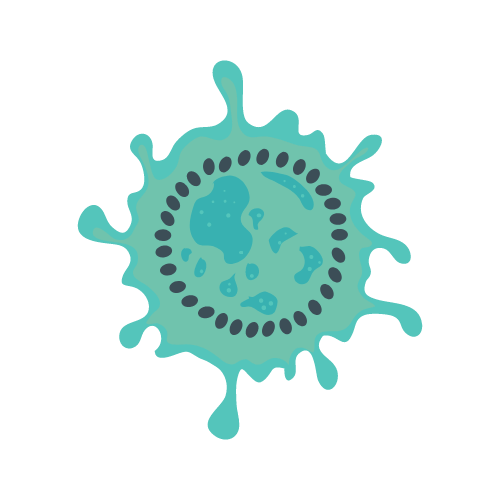
Milk thistle also has the potential to fight cancer.
That’s because milk thistle has three unique chemical compounds (together the 3 compounds are referred to as “Silymarin”) that work together to slow down cancer cell growth. In fact, in initial studies, Silymarin has been able to weaken cancer growth in prostate, skin, breast, and cervical cells.
And…ding ding ding…you guessed it: Hemochromatosis and cancer are linked. This is especially important for anyone who gets their hemochromatosis diagnosis later in life.
When hereditary hemochromatosis goes untreated for too long, the cells harmed by excess iron in your body have time to multiply. When they multiply, they create more damaged cells.
The number of damaged cells grows and grows, and even your cells’ DNA can become altered, so those cells no longer work the way they’re supposed to.
When cells’ DNA gets altered, that’s how cancer can start. In layman’s terms – cancer is simply a bunch of damaged cells that keep growing and multiplying.
Liver cancer is the most prevalent for anyone with hemochromatosis. Breast cancer, colon cancer, and pancreatic cancer are also common.
7. PREVENTS AGING

Did you know that iron overload is associated with premature aging?
Iron causes what is known as “oxidative damage.”
Put simply, iron reacts with the cells in your body (damaging them and making them go wonky), and this actually sets off a whole chain of reactions that harms a bunch more of your cells.
One thing in particular gets damaged by this chain of reactions – something in your cells’ DNA called “telomeres.”
The chain reactions make your telomeres shorter.
You might be thinking..yawn. Short telomeres? Could I care less?
Guess what – young people have long telomeres. Old people have short telomeres.
When iron overload causes your telomeres to get shorter, you essentially get older. Short telomeres make you more susceptible to age-related diseases and age-related problems because your cells are no longer able to do what they once did.
Sigh. That’s not fun.
Lucky for us, as we’ve learned above, milk thistle can help repair and regenerate cells!
Milk thistle has even been studied for its anti-aging effects because of its powerful antioxidant properties.
Fight to keep your telomeres long! Pop a milk thistle tablet in your mouth.
IS MILK THISTLE SAFE?
Yes! Institutions like the Mayo Clinic and doctors like Dr. Eric Lewis have given the thumbs up to taking milk thistle on a regular basis. Studies of patients taking milk thistle for hepatitis C and cancer also reference its safety.

There are a few groups of people who should be more cautious before trying milk thistle:
- Pregnant or breastfeeding women – there haven’t been enough studies to prove milk thistle’s safety for pregnant women or new moms, so doctors advise to avoid it just to be safe.
- If you have allergies to ragweed, chrysanthemums, marigolds, chamomile, yarrow or daises – you might also be allergic to milk thistle so be careful.
- Women with hormone-sensitive conditions (uterine fibroids, endometriosis, or a history of hormone-related cancers such as hormone-related breast cancer) – it’s generally recommended to stay away from milk thistle.
- People with diabetes – because milk thistle can reduce insulin resistance and lower blood sugar, it’s super important you talk to your doctor before trying milk thistle.
- Kids – there hasn’t been enough research testing milk thistle’s safety for kids, so it may be best to steer clear.
HOW TO USE MILK THISTLE
First, you need to know your terms.
When it comes to milk thistle, these can be a little bit confusing.
Milk thistle’s “official” name is Silybum marianum.
Milk thistle extract is made up of three compounds (silybin, silydianin, and silychristin) collectively known as silymarin, so you might see milk thistle being called silymarin.
Of the three compounds in silymarin, silybin is the most “active” (aka it does the most beneficial work in your bod! It has the most polyphenols that bind to iron. And the highest level of antioxidants that protect your organs and fight off inflammation). That’s why you might see milk thistle extract with just silybin.
ALL OF THESE ARE REFERRING TO MILK THISTLE:
- Silybum marianum (milk thistle’s official name)
- Silymarin (milk thistle extract – made up of three compounds)
- Silybin (the most active compound)
- Silydianin and Silychristin (the other two compounds)
CHOOSING THE BEST HERBS
When choosing your herbs, don’t forget about these two critical factors:
- Dosage
- Quality
Dosage
If you take too small of a dose, you might not get the benefits that it was originally researched for. If you take too much, you could be harming your body. So make sure you read labels (and talk to your doc) and take the recommended amount. Remember – herbs are powerful, and they can impact your body’s chemistry. Herbs can seriously interact with other drugs you might be taking, so always talk to your doctor before you try a new herb. Make sure you let your doctor know about any health conditions you have because you might need to stay away from certain herbs.
Quality
If you’re going to buy the cheapest thing out there, it may not be worth it. You’ll want herbs that have been sourced and processed correctly so you get the benefits (unfortunately, a lot of herbs are fake – made up of fillers or contaminated with other plants).
MY FAVES
There’s a whole variety of milk thistle products out there. The seeds and leaves of the milk thistle plant can be consumed as a pill, powder, tincture, extract, or tea. Find what works best for you!
I’m a big fan of Gaia Herbs because you can trace every herb to its source through their “Meet Your Herbs” program. These capsules are easy and convenient way to get a hearty dose of iron-fighting antioxidants.

Gaia’s Liver Health capsules contain a combination of herbs known to heal and protect your liver. Mostly milk thistle, there’s also turmeric, schisandra berry, Chinese skullcap root, and licorice root.

To mix into your breakfast bowls, smoothies, and baked goods (milk thistle muffins, anyone?) – try Erbology’s milk thistle powder! I’m obsessed with this brother-sister company and can’t recommend this powder enough! You can also add this to hot water for a cup of tea.

If you have a sensitive stomach or taking pills makes you feel nauseated – Herb Pharm’s tinctures are the way to go! Try adding a couple drops to your water, juice, or beverage of choice (it’s got a bit of a strong taste – so be ready!).

TIME TO GET STARTED!
Do you take milk thistle already or do you want to start? What do you think of it? Have you noticed any differences? Leave a comment below!
P.S. FOR THOSE OF YOU WHO DO YOUR RESEARCH:

You might’ve noticed that there is one case study in which milk thistle was thought to have exacerbated a woman’s hemochromatosis.
Are you worried?
Dr. Eric Lewis explains this “milk thistle controversy” perfectly. There were other factors involved – not just milk thistle. This one case study should not outweigh the research that shows how helpful milk thistle is!
As we looked at above, there is research backing up the fact that milk thistle is safe to take on a long-term basis, it’s effective at blockingand chelating iron, it’s got amazing antioxidant and anti-inflammatory properties, and it protects liver health and organ health overall.

The views expressed in this post are for informational purposes only. This post is not, nor is it intended to be, a substitute for professional, medical, or nutritional advice, diagnosis, or treatment, and should never be relied upon for professional, medical or nutritional advice, diagnosis, or treatment.
No content on talorae.com, including but not limited to pictures, graphics, videos, and text, may be republished or distributed, for financial gain or not, without my written permission.
As an Amazon Associate I earn from qualifying purchases. The above content may contain affiliate links, meaning I do get a commission when you make a purchase through those links. There is no additional cost to you. Please read my disclaimer for more info.
